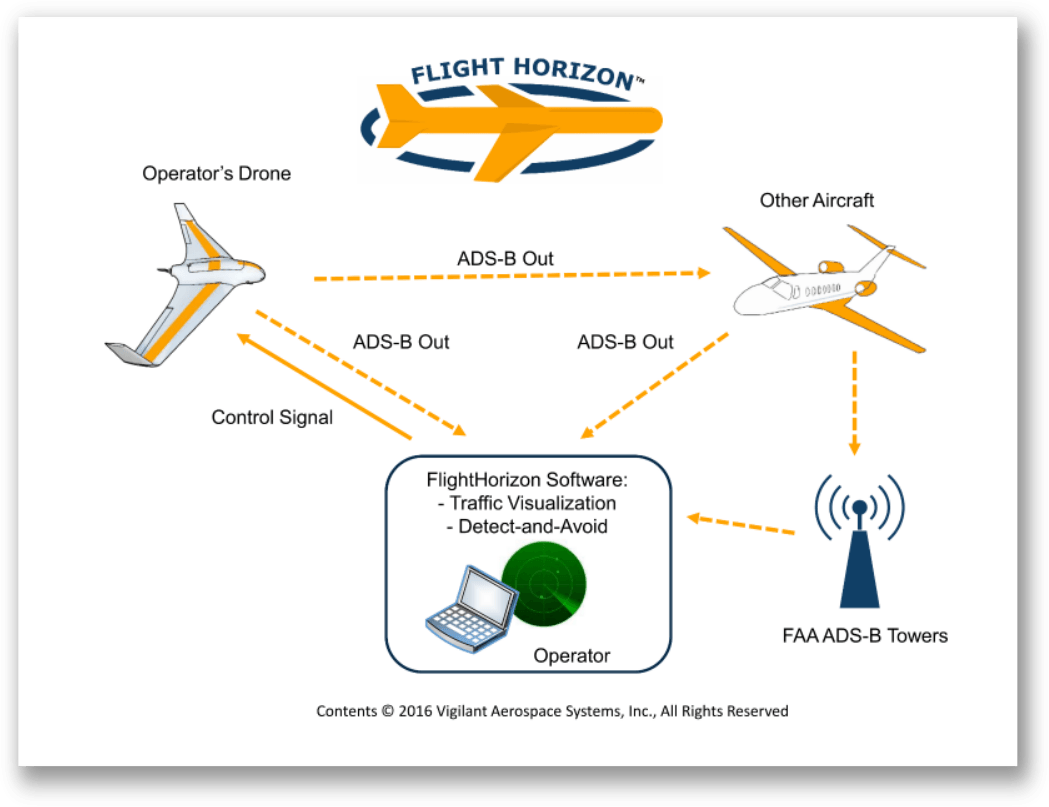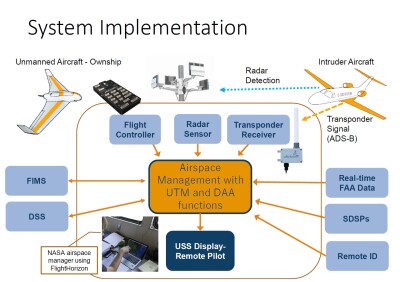On August 4th, 2016 Vigilant Aerospace announced it had become a partner in the development and testing of NASA’s UAS Traffic Management (UTM) system that is being put together at the Armstrong Flight Research Center in Silicon Valley, California.
The UTM system designed by NASA would enable safe, low-altitude civilian UAV operations by providing operators with the information required to maintain adequate separation from other manned and unmanned aircraft. Certain routes would be isolated which would take into account restricted airspace and dangerous weather conditions.Vigilant would use its FlightHorizon™ avionics software to integrate UTM flight plans during test flights and then making the data available to NASA personnel. FlightHorizon™ was developed by Vigilant to provide drone operators with easy visualization of air traffic and detect-and-avoid instructions for integration into the national airspace and beyond line-of-sight flying.After months of preparation, Vigilant Aerospace recently announced it had conducted the first successful beyond-visual-line-of-sight (BVLOS) flight test at NASA’s Armstrong Flight Research Center using FlightHorizon™ in a simulated environment. The tests corroborated the system’s ability to supply BVLOS flight safety information for both small and mid-sized drones as well as comply with FAA regulations and requirements for the integration of UAV’s into the national airspace.This particular flight was also used to test FlightHorizon™ detect-and-avoid (DAA) algorithms, its easiness to integrate with different vendor’s hardware and the performance of its’ user interface under real flight scenarios. The initial test included almost 100 scripted encounters between unmanned aircraft under these conditions. During the test flight the system effectively detected and tracked trespasser aircraft and supplied traffic alerts and collision warnings on adjacent air traffic on every single case during the encounters. Eighteen distinct flight scenarios were flown multiple times using two DJI Phantom 4 drones with one aircraft acting as the “legal user of the airspace” and the other three acted as the trespassing aircraft. Some scenarios were designed to trigger the system’s traffic alerts, threat alerts and collision warnings, therefore providing useful information to the drone pilots, allowing them to avoid collisions between the aircraft. Other scenarios were flown to include BVLOS flights simulating real-life events in which visual detection of nearby aircraft by unmanned pilots was not possible due to weather, altitude, distance and speed. All these tests were closely monitored by FAA and FCC senior personnel and were the culmination of a multi-month program of development, safety planning and test preparation, which concluded in December, 2016.It’s a significant development because the FlightHorizon™ system uses off-the-shelf hardware and takes advantage of the existing national air-traffic control information in its current format. It can also can be installed on both smaller and larger UAVs. The system is designed to comply with FAA BVLOS drone regulations, night flying and airspace authorization including Part 107.200 waiver requirements and RTCA SC-228 operating standards.It’s technologies like these and cooperation between the private sector and government agencies that will allow for safe integration of manned and unmanned aircraft in controlled airspace in the near future.
Some scenarios were designed to trigger the system’s traffic alerts, threat alerts and collision warnings, therefore providing useful information to the drone pilots, allowing them to avoid collisions between the aircraft. Other scenarios were flown to include BVLOS flights simulating real-life events in which visual detection of nearby aircraft by unmanned pilots was not possible due to weather, altitude, distance and speed. All these tests were closely monitored by FAA and FCC senior personnel and were the culmination of a multi-month program of development, safety planning and test preparation, which concluded in December, 2016.It’s a significant development because the FlightHorizon™ system uses off-the-shelf hardware and takes advantage of the existing national air-traffic control information in its current format. It can also can be installed on both smaller and larger UAVs. The system is designed to comply with FAA BVLOS drone regulations, night flying and airspace authorization including Part 107.200 waiver requirements and RTCA SC-228 operating standards.It’s technologies like these and cooperation between the private sector and government agencies that will allow for safe integration of manned and unmanned aircraft in controlled airspace in the near future.















Comments